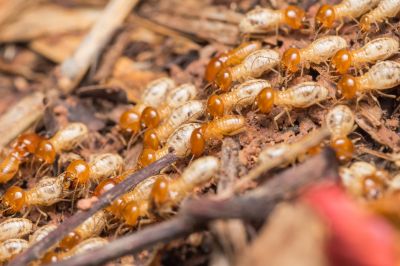Popular Termite Extermination Products For Homeowners and Professionals
Discover trusted products that deliver reliable results for termite prevention and eradication across various settings.
 Termite infestations can pose significant challenges for homeowners and property managers alike. Effective termite control often involves a combination of products designed to target different stages of the termite lifecycle and various entry points. From liquid soil treatments to baiting systems and physical barriers, there are numerous options available to help manage and mitigate termite activity. Understanding the characteristics and applications of each product type can assist in selecting the most appropriate solution for specific situations.
Termite infestations can pose significant challenges for homeowners and property managers alike. Effective termite control often involves a combination of products designed to target different stages of the termite lifecycle and various entry points. From liquid soil treatments to baiting systems and physical barriers, there are numerous options available to help manage and mitigate termite activity. Understanding the characteristics and applications of each product type can assist in selecting the most appropriate solution for specific situations.
Top Overall Option
Liquid Soil Termiticide Barrier
A liquid soil treatment designed to create a chemical barrier around a property’s foundation, helping to deter termites from entering. It is formulated for ease of application and effective coverage, making it suitable for both professional and DIY use. Proper application can support ongoing termite management by establishing a protective barrier, though it is recommended to follow manufacturer instructions carefully for optimal results.
Types of Products For Termite Exterminations
Liquid Soil Termiticide
Chemical solutions applied around foundations to create a barrier that discourages termite entry.
Baiting Stations
Stations placed around the property that attract termites and deliver poisoned bait to control colonies.
Physical Barriers
Non-chemical barriers such as stainless steel mesh or sand that prevent termite intrusion during construction.
Foam Treatments
Foam formulations used to treat localized areas or infested wood components.
Dust Formulations
Fine powders applied in wall voids or cracks to target termites in hidden spaces.
Boric Acid Solutions
Natural mineral-based solutions used as a residual treatment for wood and soil.
Liquid Baits
Liquid bait systems that attract termites and deliver slow-acting toxins.
Wood Treatments
Chemical or natural treatments applied directly to wood to prevent or eliminate infestations.
Electro-Gun Termite Killers
Devices that deliver electric shocks to eliminate termites in localized areas.
Monitoring and Inspection Tools
Tools and devices used to detect termite activity and monitor ongoing control efforts.
Popular Choices
Widely used for ongoing monitoring and control, these stations attract termites and help reduce colonies.
Commonly recommended for creating a chemical barrier around structures.
Often used during new construction to prevent termite entry from the ground.
Applied directly to wood components to deter termites from feeding.
Devices and tools that help identify active termite activity early.
Used in targeted areas to eliminate termites in wall voids and cracks.
Effective for localized infestations and treatment of inaccessible areas.
Applied around foundations to create a chemical defense against termites.
Devices used for targeted elimination in small, localized areas.
Products that act as deterrents to termite activity without chemicals.
Liquid termiticide treatments are commonly used to create a chemical barrier around a property’s foundation, preventing termites from entering or establishing colonies. These products are typically applied by professionals but are also available in DIY formulations for smaller infestations. Baiting systems involve placing stations around the property that attract termites, which then carry poisoned bait back to their colonies, gradually reducing termite populations over time. Physical barriers, such as stainless steel mesh or sand barriers, provide a non-chemical approach to prevent termites from infiltrating structures.
In addition to these primary methods, there are also foam treatments, dust formulations, and natural repellents that can be used in specific scenarios. Each product type offers different advantages depending on the severity of the infestation, the structure’s construction, and the homeowner’s preferences. Proper application and regular monitoring are essential to ensure the effectiveness of any termite control strategy. Consulting with pest control professionals can help determine the most suitable combination of products to achieve long-term protection.
Key Buying Considerations
- Type of infestation: Determine whether the problem is localized or widespread to select appropriate products.
- Application method: Consider whether the product is suitable for DIY use or requires professional application.
- Coverage area: Ensure the product covers the necessary space effectively.
- Product longevity: Check how long the treatment remains effective before reapplication is needed.
- Targeted vs. preventative: Decide if the goal is to eliminate an existing infestation or prevent future activity.
- Environmental conditions: Consider moisture levels, soil type, and structural features that may influence product effectiveness.
- Safety precautions: Review safety instructions, especially for chemical-based products.
- Ease of use: Evaluate how simple the application process is for your skill level.
- Monitoring requirements: Some products require ongoing inspection and maintenance.
- Compatibility with existing treatments: Ensure new products do not interfere with previous or ongoing treatments.
- Cost and value: Balance the product's cost against its expected effectiveness and coverage.
- Regulatory compliance: Confirm that the product complies with local regulations and standards.
- Re-entry time: Be aware of any waiting periods before the area can be safely reoccupied.
- Potential for damage: Consider if the product may affect building materials or landscaping.
- Manufacturer reputation: Choose products from reputable manufacturers with clear instructions and safety data.
